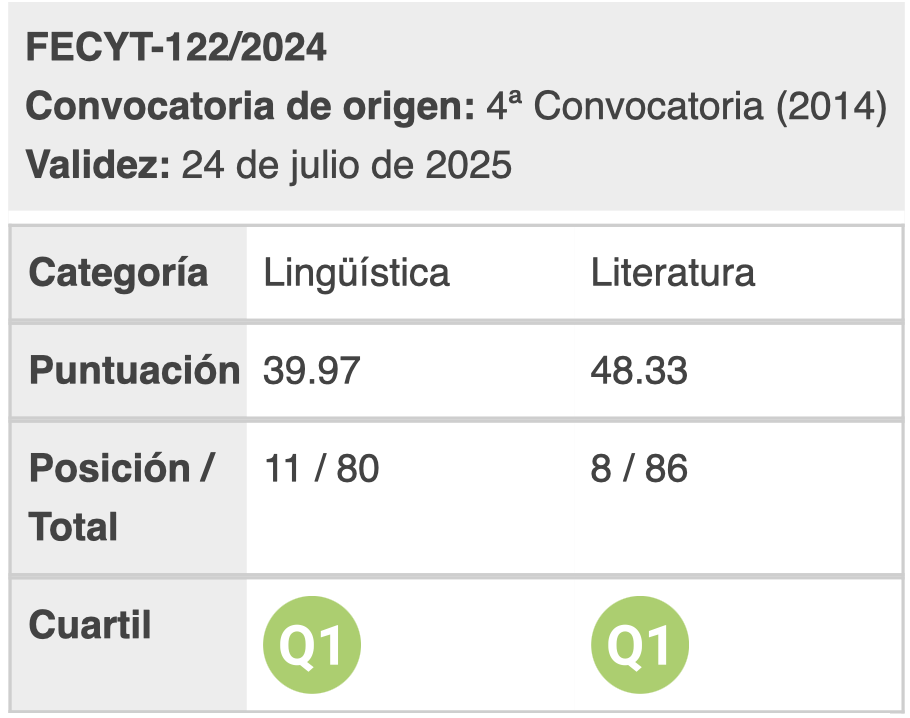L1 Use, Lexical Richness, Accuracy and Syntactic Complexity in the Oral Production of CLIL and NON-CLIL Learners of English
Abstract
As more focus on communication is promoted in Content and Language Integrated Learning (CLIL) classrooms and general proficiency is usually enhanced in these settings, this study aims to explore (i) whether a lower rate of L1 use, as regards interactional strategies and transfer lapses, is found in CLIL learners when compared to NON-CLIL learners; (ii) whether differences exist between both groups in lexical richness (type/token ratio and D), accuracy (word order and correct production of the definite and indefinite article) and syntactic complexity (production of simple and complex sentences and variety of tenses used); and (iii) whether L1 use correlates with lexical richness, accuracy and syntactic complexity. The analysis of an oral production task of two groups of fourteen year-old Basque/Spanish bilingual students learning L3 English indicates that the CLIL group made lower use of L1. The CLIL group also obtained better scores in lexical richness and general proficiency as well as in the correct production of definite and indefinite articles and in the use of complex clauses. No correlation was observed between L1 use and accuracy or syntactic complexity, suggesting that a decrease in L1 use is not always related to better performance in specific aspects of language or the use of more complex language.Downloads
Download data is not yet available.
Metrics
Metrics Loading ...
Downloads
Published
2015-12-18
How to Cite
Martínez Adrián, M., & Gutiérrez Mangado, M. J. (2015). L1 Use, Lexical Richness, Accuracy and Syntactic Complexity in the Oral Production of CLIL and NON-CLIL Learners of English. Atlantis. Journal of the Spanish Association for Anglo-American Studies, 37(2), 177–199. Retrieved from https://www.atlantisjournal.org/index.php/atlantis/article/view/273
Issue
Section
Articles




